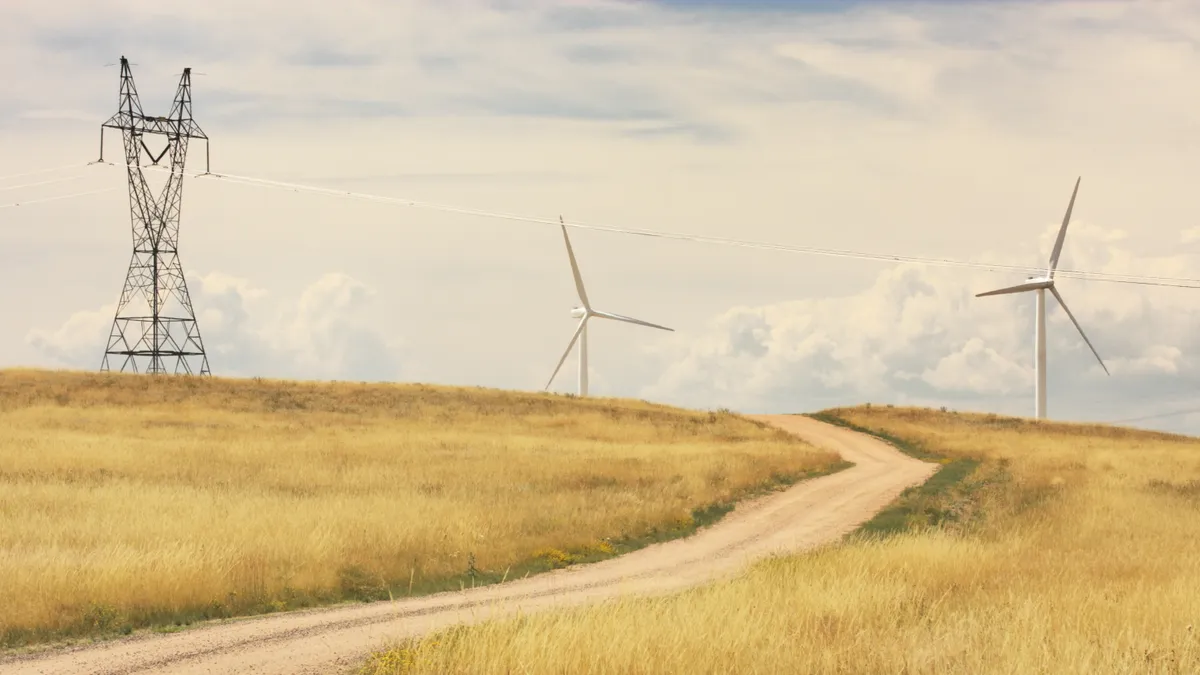Dive Brief:
- Advanced Energy United is asking the Federal Energy Regulatory Commission to strengthen its proposal to reform transmission planning with new initiatives such as holding transmission providers accountable for meeting deadlines and establishing clear requirements for transmission planning and cost allocation.
- With some exceptions such as a New York-New Jersey collaboration, states and regional transmission authorities are making their own interests a priority, said Verna Mandez, the group’s transmission campaign director. A new Department of Energy study found “a significant need” for interregional transmission between almost all regions of the U.S.
- A January report from consulting firm Brattle Group concluded that a lack of aligned leadership from federal, state and regional transmission organization policy makers is hindering transmission buildout, and that proactive transmission planning could save up to $20 billion.
Dive Insight:
Mandez said a “lack of precedent and poorly defined decision-making authority” might be two of the biggest threats to the large-scale transmission buildout that the clean energy transition will require.
“Legal and procedural frameworks for cooperation on the scale necessary to accomplish transmission system buildout don’t really exist,” she said. “Advocates and decision-makers are left with the daunting task of determining who will take the lead – a task made even more difficult by state-level reticence to make compromises or surrender authority over economically impactful projects.”
Brattle’s report found that most grid planning for the offshore wind buildout aims to accommodate the federal offshore wind goal of 30 GW by 2030, but the goals of 11 coastal states exceed 50 GW through 2050, and state decarbonization goals would require 200 GW of offshore wind by that same year.
Advanced Energy United said the lack of transmission capacity expansion thus far means that the grid can’t support the interconnection of many of the generation and storage resources that have been proposed.
With high-quality wind and solar resources often sited where the grid is least developed, transmission interconnection queues have more than 600 GW of proposed generation capacity, with many projects unable to go forward due to a lack of grid access, the group said.
In at least five states, legislators are weighing whether incumbent utilities should have a right-of-first-refusal to build transmission lines that grid operators put out to bid, shutting out independent transmission developers.
Eight states that are part of the Midcontinent Independent System Operator RTO – Iowa, Indiana, Michigan, Minnesota, Montana, North Dakota, South Dakota and Texas – already have ROFR laws, giving utilities the exclusive right to build transmission.
The Biden administration is working to bolster state cooperation on transmission. The Bureau of Ocean Energy Management joined New York and New Jersey in partnering to coordinate on offshore wind energy transmission, and the Department of Energy announced Wednesday it’s launching a 20-month analysis of transmission expansion logistics for the West Coast.
DOE also released a draft of its National Transmission Needs Study on Friday, with key findings including large benefits from increases in interregional transmission, particularly across “interconnection seams” like the one between the U.S.’s Mountain and Plains regions.
Mandez said that New Jersey’s agreement to use PJM Interconnection’s state agreement approach could become “a powerful tool” for interstate and interregional transmission planning coordination by providing a model for other RTO states to follow.














